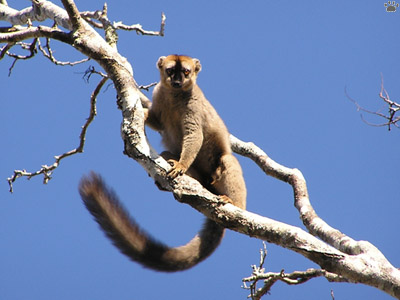
Red-fronted brown lemur (Eulemur fulvus rufus), Kirindi Nature Reserve, Madagascar.
Madagascar - Part 2
In almost every forest of Madagascar, brown lemur is the most numerous large species. There are five subspecies, each common in some part of the island. Of course, "common" means "common in Nature reserves". Outside protected areas, there is almost no forest left, and very little wildlife.
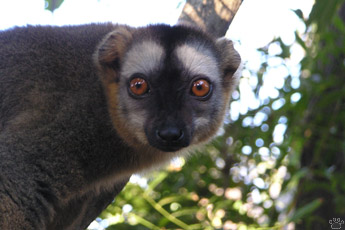 |
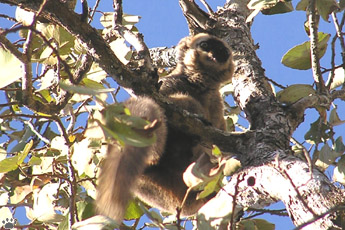 |
| Rufous brown lemurs, Kirindi. |

Female red-collared brown
lemur (E. f. collaris),
Parc National Ranomafana. |
Brown lemur and its relatives in genus Eulemur are not as strictly diurnal as indris, sifakas and cattas. In hot weather, some populations can become completely nocturnal. In tall rainforests, they spend almost all their life in the trees, but in dry forests they can often be seen on the ground.
 |
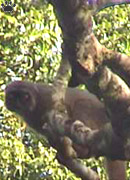 |
 |
| Common brown lemurs (E. f. fulvus), Parc National L'Ankarafantsika. |
Two species, including brown lemurs, occur not only on Madagascar, but also on some of the Comoros Islands, but it is probably the result of introduction by people a long time ago. |
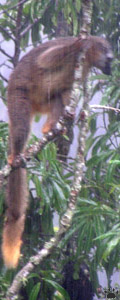
Male red-collared brown
lemur in the rain,
Ranomafana. |
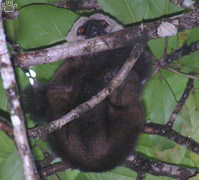 |
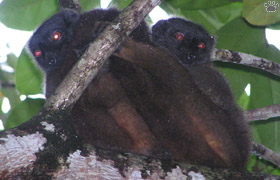 |
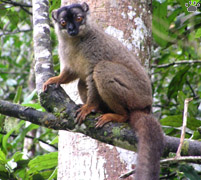 |
| White-fronted brown lemurs (E. f. albifrons), Parc National Masoala. |
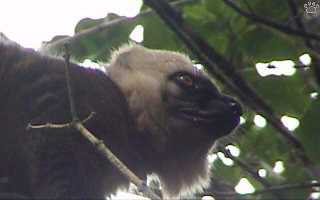
Male Sanford's brown lemur (E. f. sanfordi), Parc National L'Ankarana. |
In northern races of brown lemur, males have nice white scruffs.
|
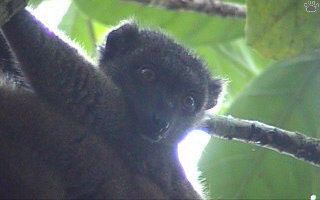
Female Sanford's brown lemur, Parc National Montagne d'Ambre. |
 |
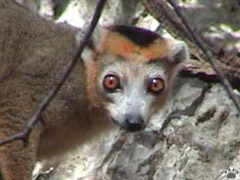 |
 |
| Crowned lemurs (E. coronatus), male in the middle. Parc National L'Ankarana. |
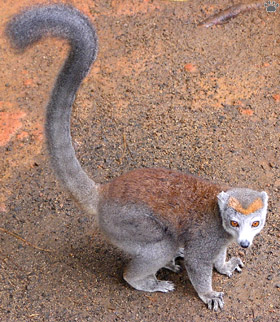
Female crowned lemur, Parc National Montagne d'Ambre. |
Crowned lemurs live only in the northern part of Madagascar. They are common in two National parks there. Males look very different from females. Crowned lemurs are usually easy to approach, and can be surprisingly tame even for lemurs. Like all other species, they have very soft fur, and are fun to pet. |
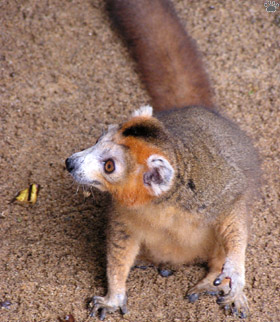
Male crowned lemur, Parc National Montagne d'Ambre. |
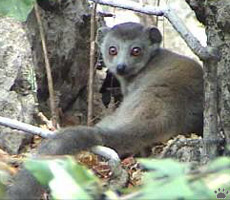
Young crowned lemur, L'Ankarana. |
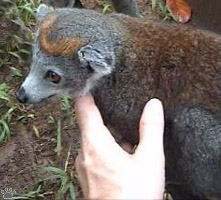
Wild crowned lemur, Montagne d'Ambre. |

Family waiting out a thunderstorm, L'Ankarana. |
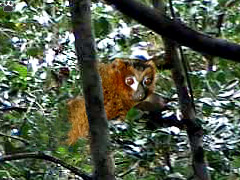
Male red-bellied lemur (E. rubriventer),
Park National Ranomafana. |
Red-bellied lemur is a shy, charming species of eastern rainforests. It's difficult to see, except in Ranomafana, where a few groups near the park headquarters are used to visitors. Black lemur (below) lives in the far northwest. Each of the two subspecies has tiny range, mostly unprotected. |
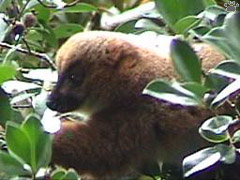
Female red-bellied lemur,
Park National Andasibe-Mantadia. |
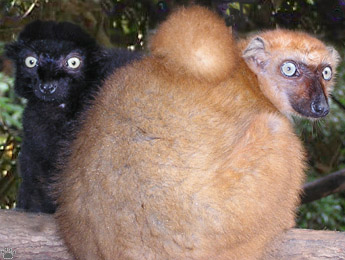 |
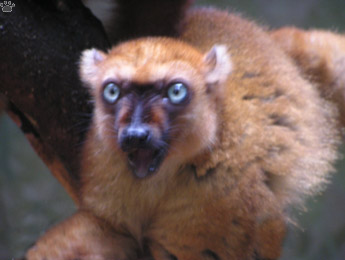 |
Blue-eyed black lemur (E. macaco flavifrons) is the only blue-eyed primate, except some humans. The other subspecies, E. m. macaco, has orange eyes.
Males are black, females orange-red. Moromandia. |
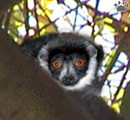
Mongoose lemur (E.
mongoz), Parc National
d'Ankarafantsika. |
Another northwestern rarity is mongoose lemur. It's a canopy species, which mostly feeds on flower nectar.
Ruffed lemurs are so visually striking that seeing them in the forest makes you remember the best trips you've ever had on acid. They are large and somewhat slow-moving fruit-eaters, inhabiting pristine rainforests of Masoala Peninsula and the mainland immediately to the east. Despite their insanely bright coloration, they aren't easy to find and follow.
|
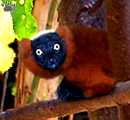
Red ruffed lemur
(Varecia variegata rubra),
Parc National Masoala. |
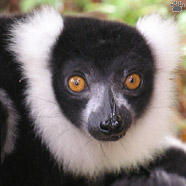
Black-and-white ruffed lemur (V. v. variegata),
Nosy Mangabe Island.
|
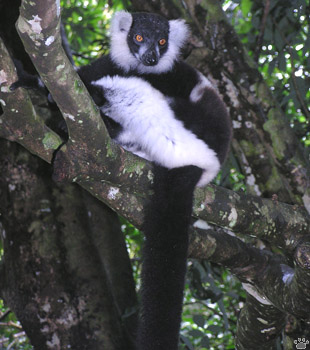 |
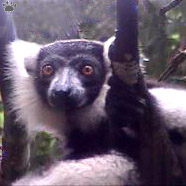
Black-and-white ruffed lemur,
Nosy Mangabe. |
Part 3: Lemurs (continued)
Back to Part 1
Home
|